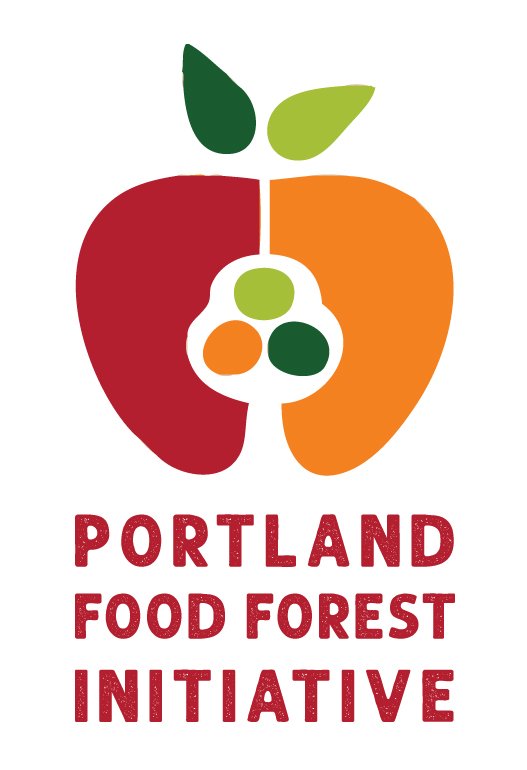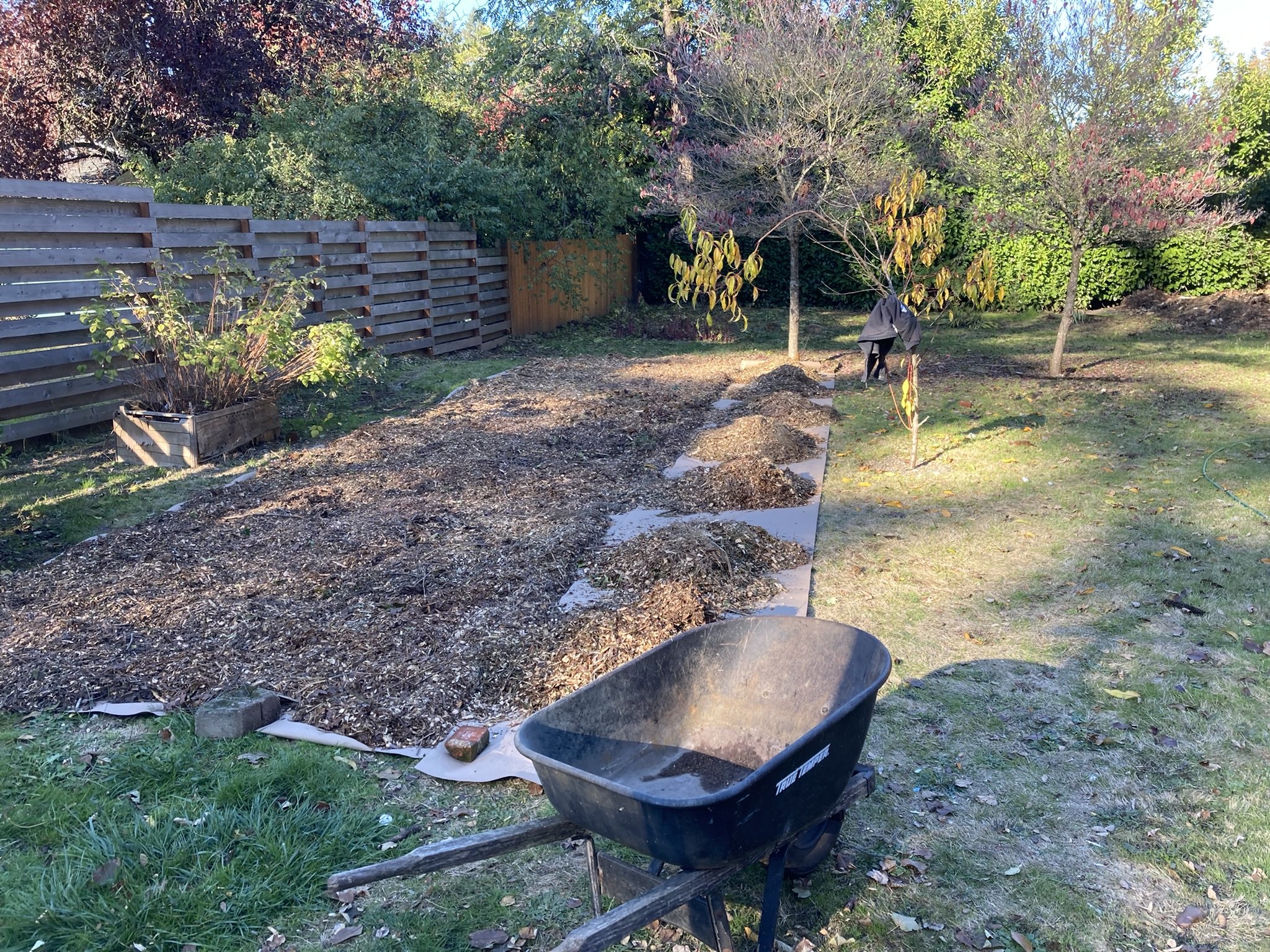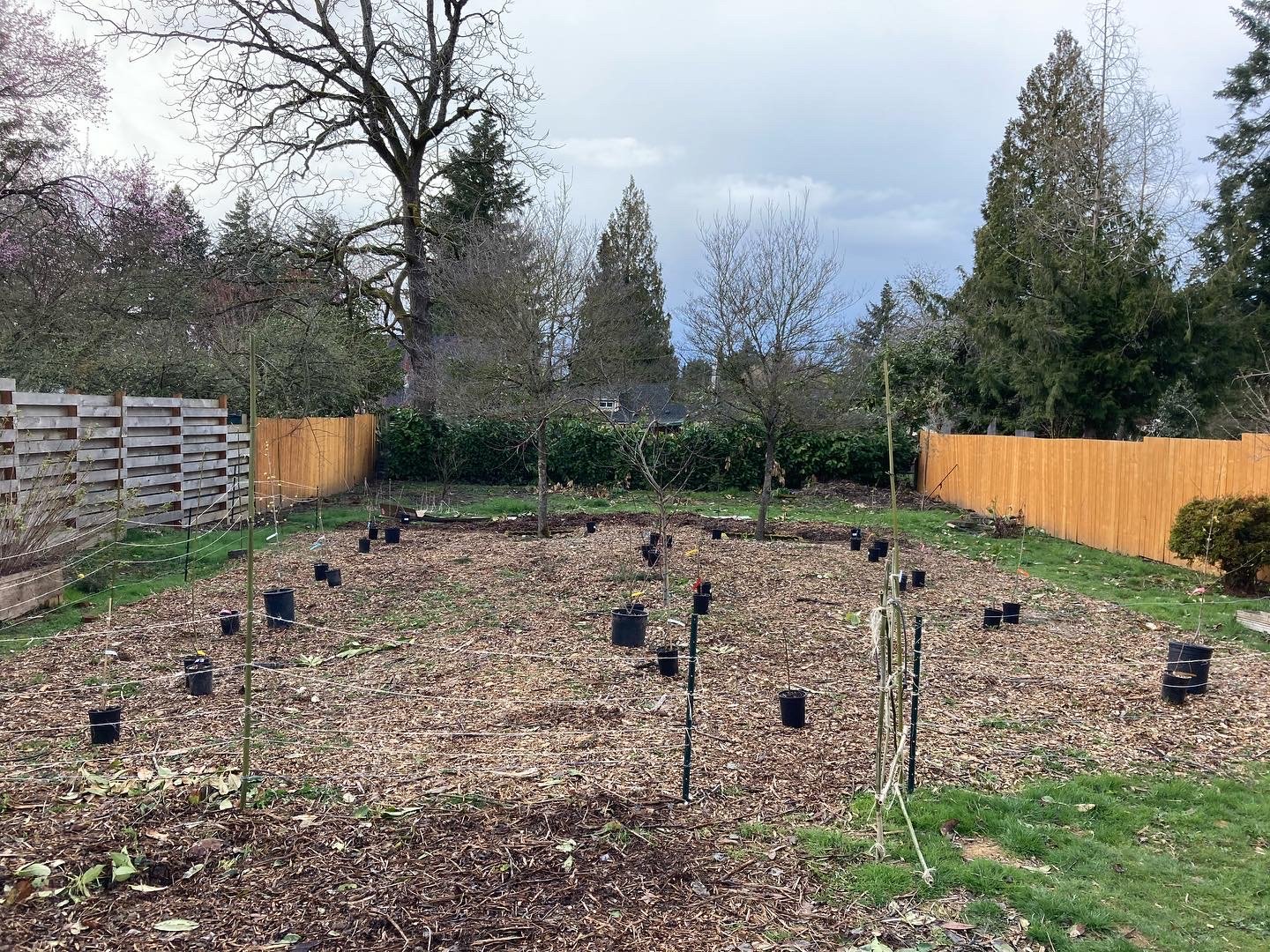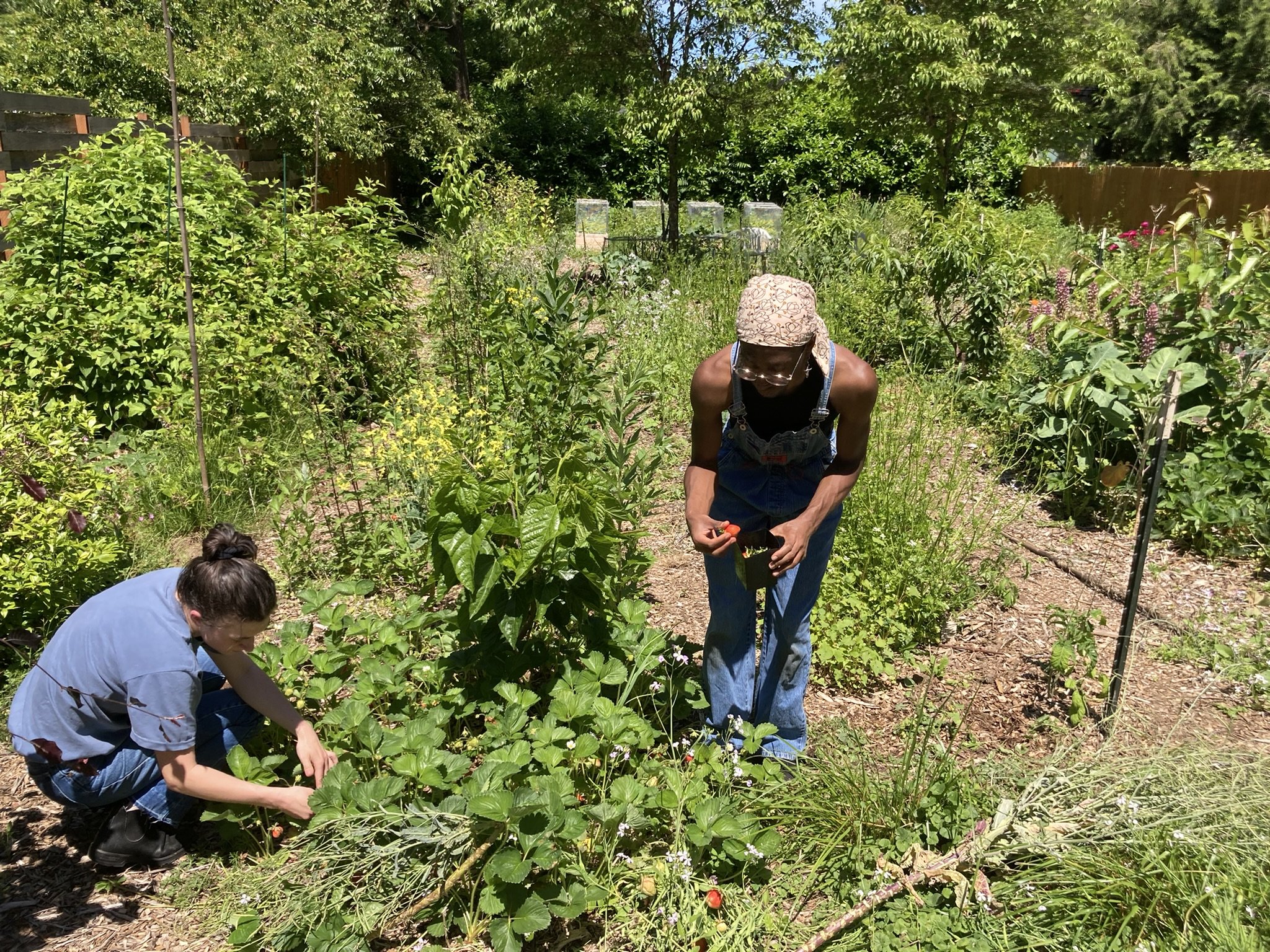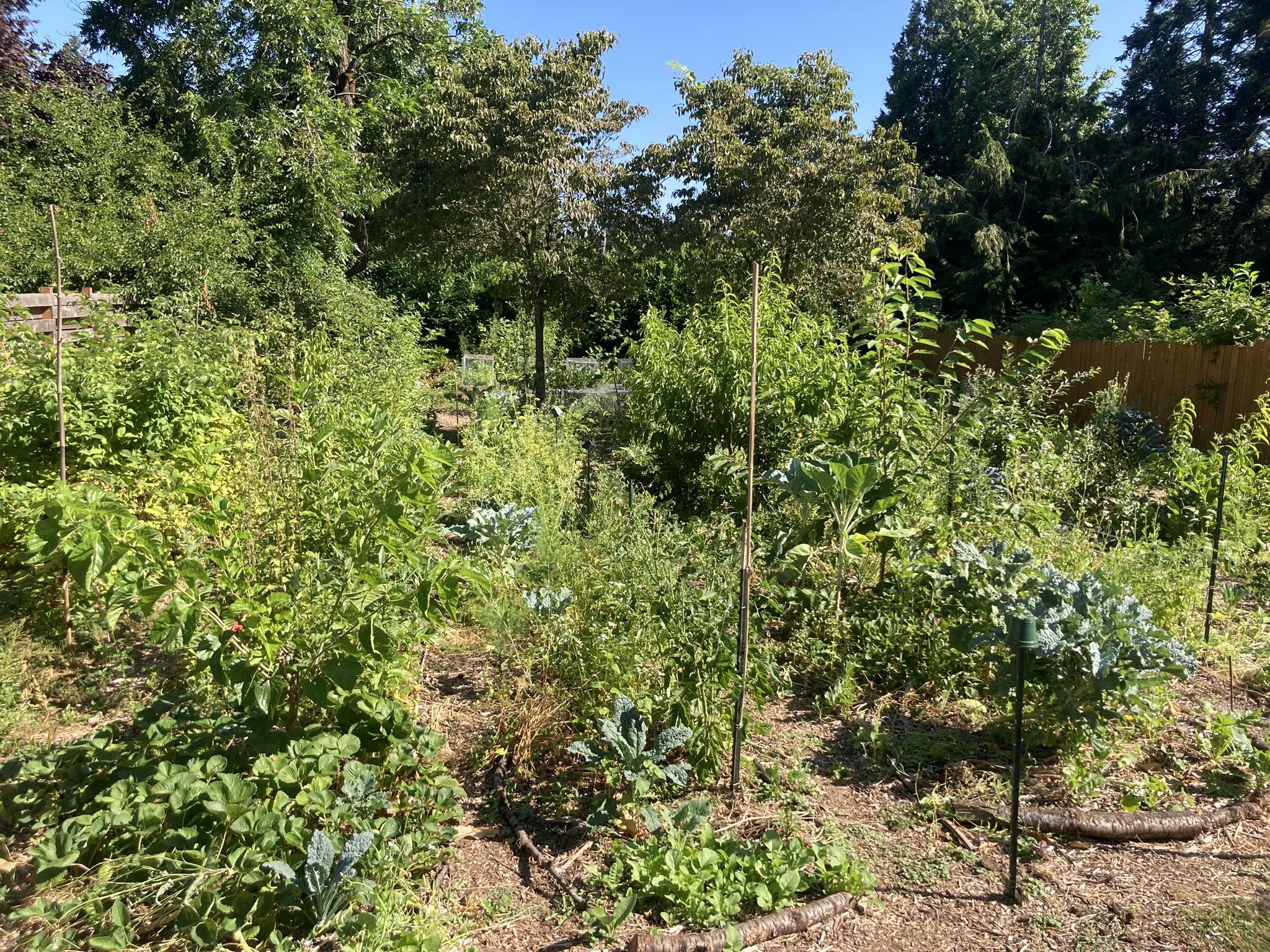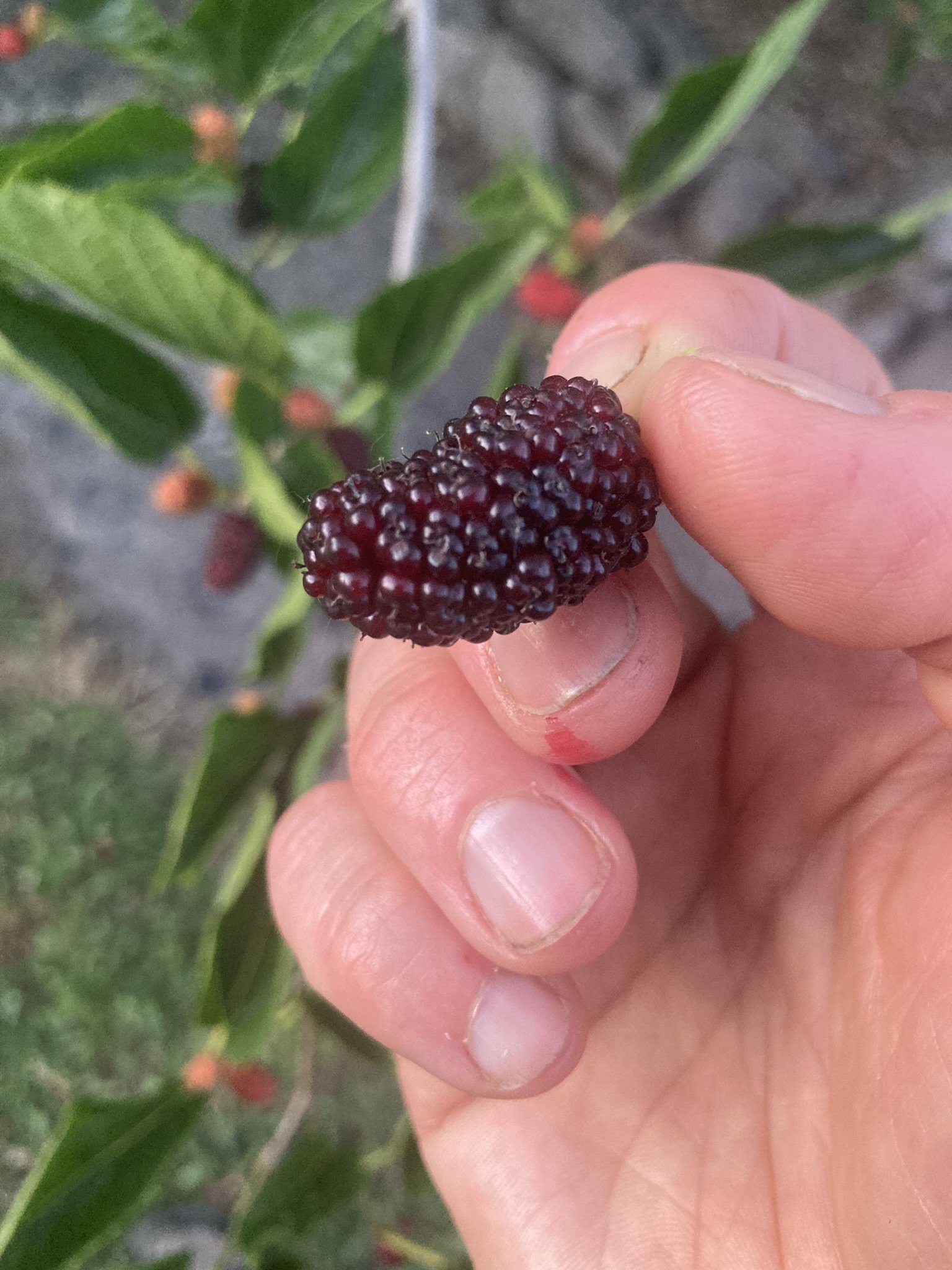
Cully Food Forest #1
CULLY FOOD FOREST #1
This is the first of five food forest demonstration sites in Cully, NE Portland. After testing the soil for heavy metals (surprisingly low levels!) we started by laying down brown paper over the grass and dumping 8” of fresh woodchips on the front 2/3 of the yard (in October). In early April we started by planting the fruit trees and shrubs. As the weather warmed we added the herbaceous layer and perennial edible vegetables, veggie rows in the aisles between tree rows, pollinator flowers, squash, root crops, and eventually hot weather crops like tomatoes and peppers. We’ve continued to add more herbaceous and rooting layer plants including asparagus, comfrey, lupine, beans, and buckwheat. This design uses principles of syntropic agroforestry and in 2024 has become part of our nut tree nursery.
October 2022
Brown paper and 8" of woodchips
Trees laid out for planting
June 2023, annuals coming up among perennials.
July 2023
May 2024
Strawberry season begins!
Nut tree air pruning boxes with chestnuts, hazelnuts, pecans, and walnuts.
June 2024, One year in.
July 2024, One year in.
June 2025
June 2025
This planting’s canopy layer tree guilds include black walnut, sweet chestnuts, mulberry, medlar, shipova, cherry, cornelian cherry, peach, plum, apple, fig, pawpaw, and almonds,
The shrub layer includes blueberries, bush cherries, currants, gooseberries, jostaberry, honeyberry, columnar apple, goji, elderberry, raspberry, blackberry, and asparagus.
The groundcover consists of 5 different cultivars of strawberry with sweet potato and squash growing during the summer.
Nitrogen Fixers include perennials seaberry, autumn olive, goumi, and lupine with fava, pole and bush beans, peanuts, and snap peas during the summer.
The herbaceous Layer includes comfrey, buckwheat, phacelia, mugwort, selfheal, stridolo, purple mountain spinach, parsley, artichoke, tree collards, sea kale, herbs, medicinals, and a variety of pollinator-supporting flowers. We’re trialing sorghum sudangrass as a biomass accumulator this year.
The vine layer includes grapes and hardy kiwi.
The root and mycelial layers include garlic, daikon radish, potatoes, onions, ginger, yacon, and winecap mushrooms
